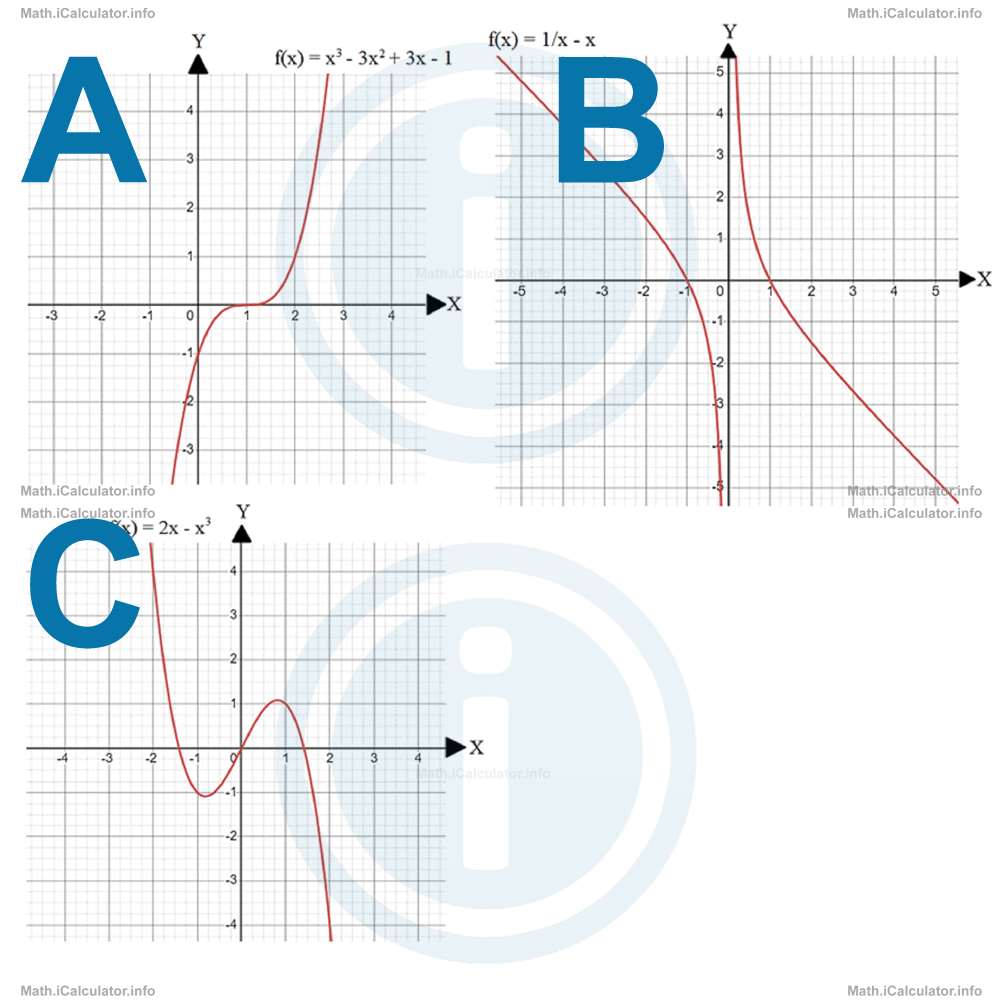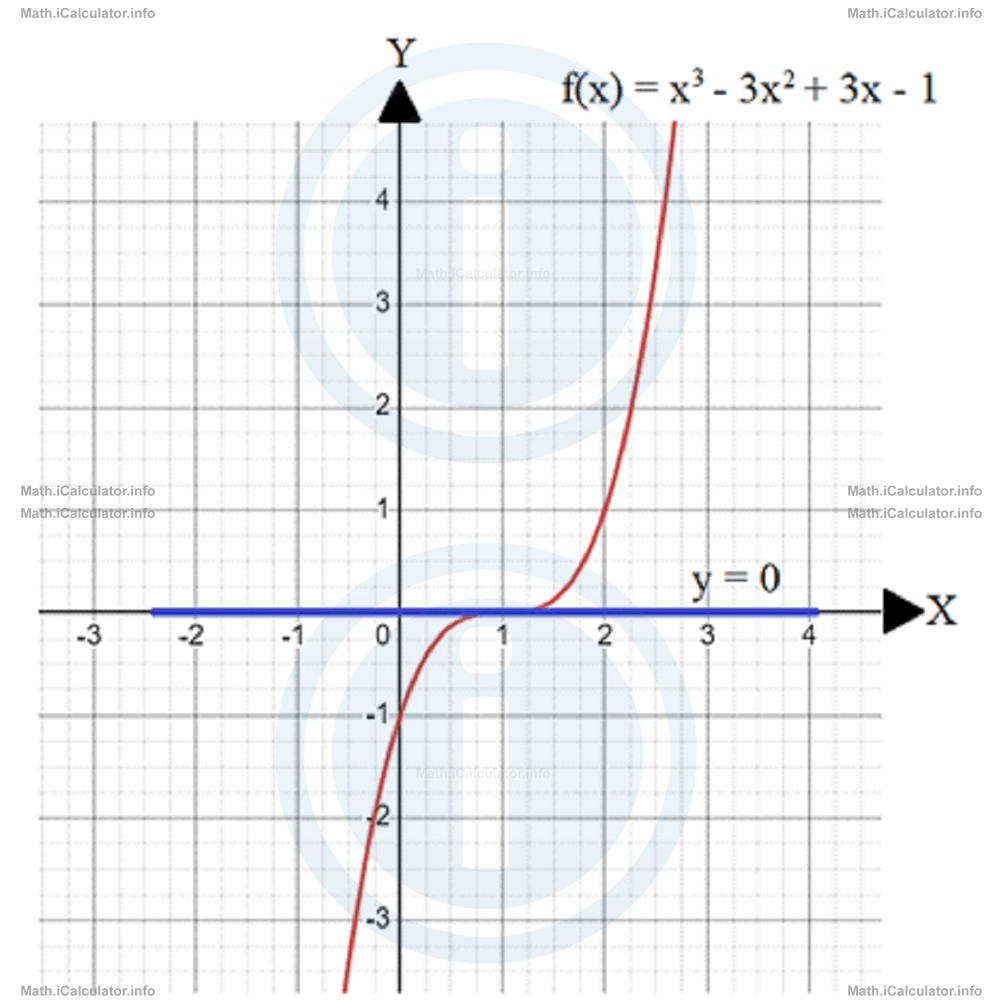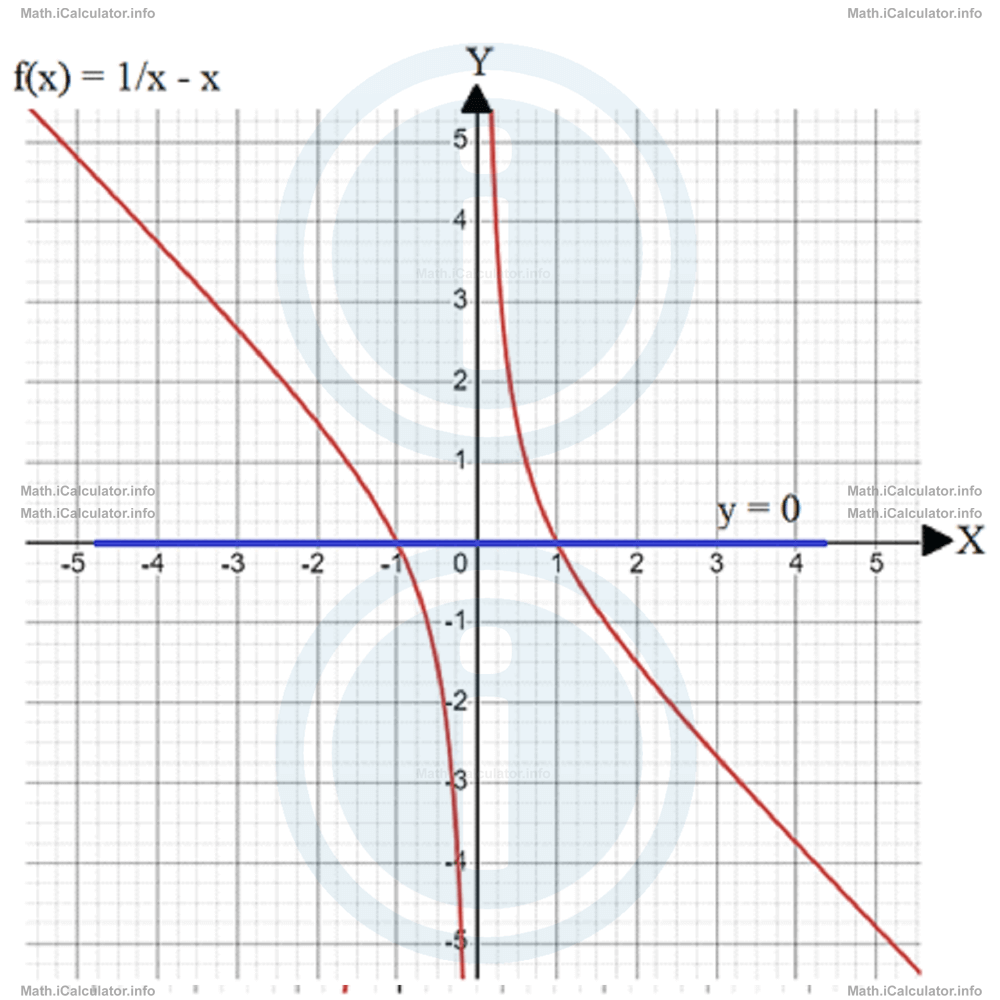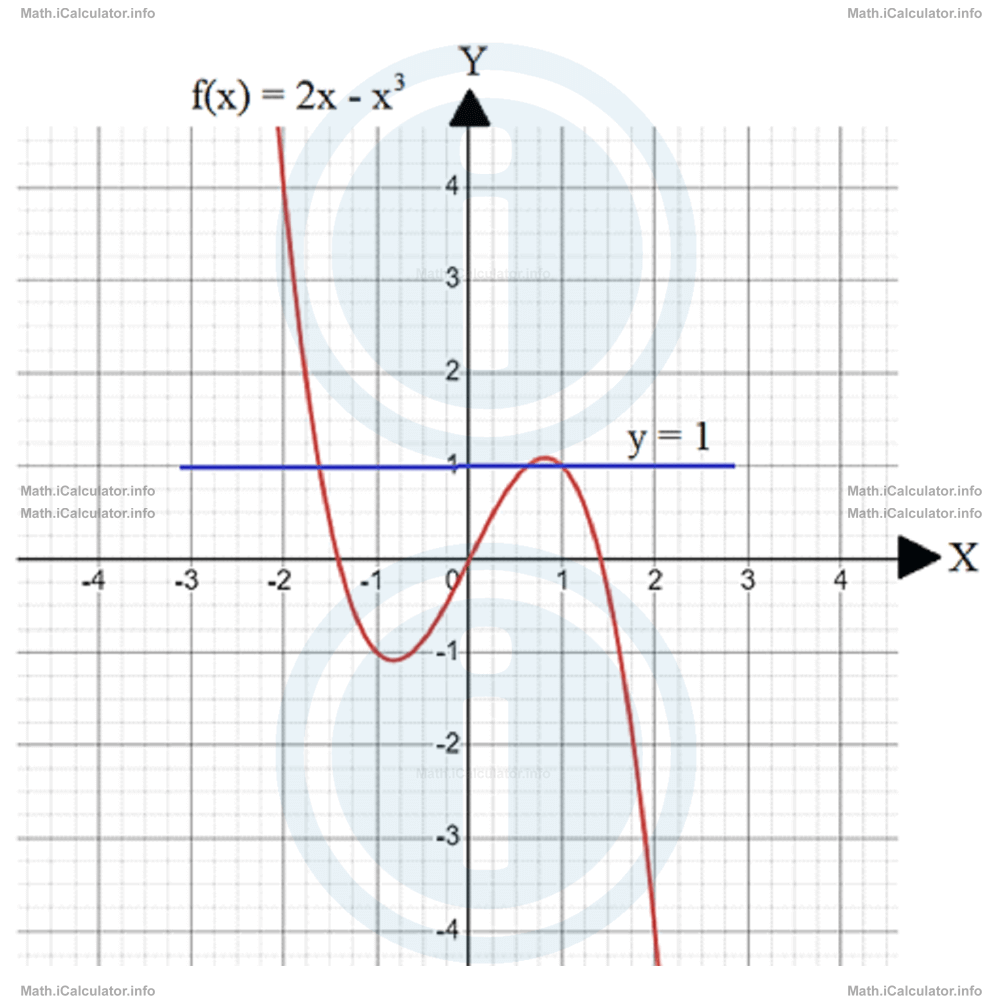Menu
Math Lesson 16.2.6 - Horizontal Line Test
Please provide a rating, it takes seconds and helps us to keep this resource free for all to use
Welcome to our Math lesson on Horizontal Line Test, this is the sixth lesson of our suite of math lessons covering the topic of Injective, Surjective and Bijective Functions. Graphs of Functions, you can find links to the other lessons within this tutorial and access additional Math learning resources below this lesson.
Horizontal Line Test
The horizontal line test is a method used to check whether a function is injective (one-to-one) or not when the graph of the function is given. It consists of drawing a horizontal line in doubtful places in order to 'catch' any double intercept of the line with the graph. In that case, there is a single y-value for two different x-values - a thing which makes the given function unqualifiable for being injective and therefore, bijective. Therefore, such a function can be only surjective but not injective. Let's see an example to clarify this point.
Example 6
Use the horizontal line test to determine which of the following graphs is/are injective.

Solution 6
- This is an injective function because the only part of the graph in which there may be some doubt about the intersection in more than one point with a horizontal line is at y = 0, which corresponds to the horizontal axis. However, looking at the graph carefully, we can see that there is a single x-intercept of the graph (at x = 1). Therefore, this function is injective.
 Indeed, if we can write this function in the factorised form as f(x) = (x - 1)3 using the transformation (a - b)3 = a3 - 3a2b + 3ab2 - b3, it becomes clearer that this polynomial function has a single root, x = 1. This means the horizontal axis can't intercept the graph at more than one point.
Indeed, if we can write this function in the factorised form as f(x) = (x - 1)3 using the transformation (a - b)3 = a3 - 3a2b + 3ab2 - b3, it becomes clearer that this polynomial function has a single root, x = 1. This means the horizontal axis can't intercept the graph at more than one point.
As for the rest of the graph, there is no doubt that a horizontal line drawn from anywhere intercepts the graph at a single point. Therefore, this function is injective (one-to-one), i.e. every x-value has in correspondence a single y-value. - This is not an injective function because it is evident that all lines drawn from any vertical position intercept the graph in two points. For example, the horizontal axis (y = 0) intercepts the graph at x = -1 and x = 1 because f(-1) = 1/(-1) - (-1)and
= -1 + 1
= 0f(1) = 1/1 - 1Look at the figure.
= 1 - 1
= 0
- This too is not an injective function because we can find more than two x-values for the same y-value. Graphically, this is discovered by making the horizontal line test. Again, we can choose the X-axis but since we have used it in the previous two examples, we can choose another horizontal line, for example, y = 1. After doing this, it is easy to see that this line intercepts the graph at three different points, as shown in the figure.

You have reached the end of Math lesson 16.2.6 Horizontal Line Test. There are 7 lessons in this physics tutorial covering Injective, Surjective and Bijective Functions. Graphs of Functions, you can access all the lessons from this tutorial below.
More Injective, Surjective and Bijective Functions. Graphs of Functions Lessons and Learning Resources
Whats next?
Enjoy the "Horizontal Line Test" math lesson? People who liked the "Injective, Surjective and Bijective Functions. Graphs of Functions lesson found the following resources useful:
- Horizontal Feedback. Helps other - Leave a rating for this horizontal (see below)
- Functions Math tutorial: Injective, Surjective and Bijective Functions. Graphs of Functions. Read the Injective, Surjective and Bijective Functions. Graphs of Functions math tutorial and build your math knowledge of Functions
- Functions Revision Notes: Injective, Surjective and Bijective Functions. Graphs of Functions. Print the notes so you can revise the key points covered in the math tutorial for Injective, Surjective and Bijective Functions. Graphs of Functions
- Functions Practice Questions: Injective, Surjective and Bijective Functions. Graphs of Functions. Test and improve your knowledge of Injective, Surjective and Bijective Functions. Graphs of Functions with example questins and answers
- Check your calculations for Functions questions with our excellent Functions calculators which contain full equations and calculations clearly displayed line by line. See the Functions Calculators by iCalculator™ below.
- Continuing learning functions - read our next math tutorial: Basic Functions
Help others Learning Math just like you
Please provide a rating, it takes seconds and helps us to keep this resource free for all to use
We hope you found this Math tutorial "Injective, Surjective and Bijective Functions. Graphs of Functions" useful. If you did it would be great if you could spare the time to rate this math tutorial (simply click on the number of stars that match your assessment of this math learning aide) and/or share on social media, this helps us identify popular tutorials and calculators and expand our free learning resources to support our users around the world have free access to expand their knowledge of math and other disciplines.